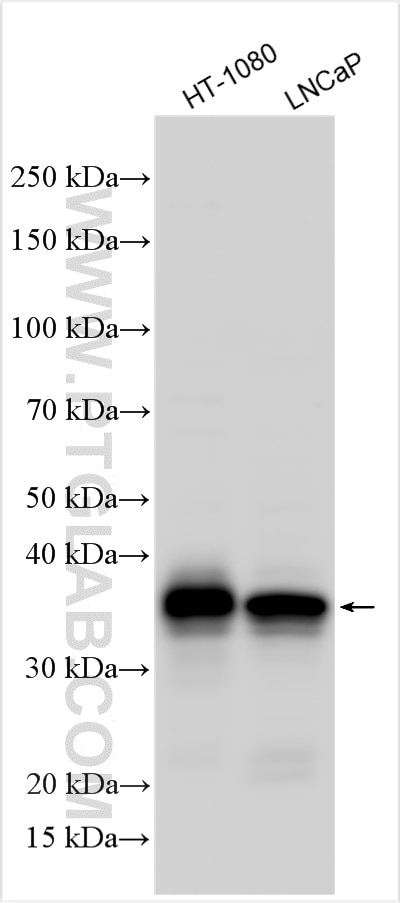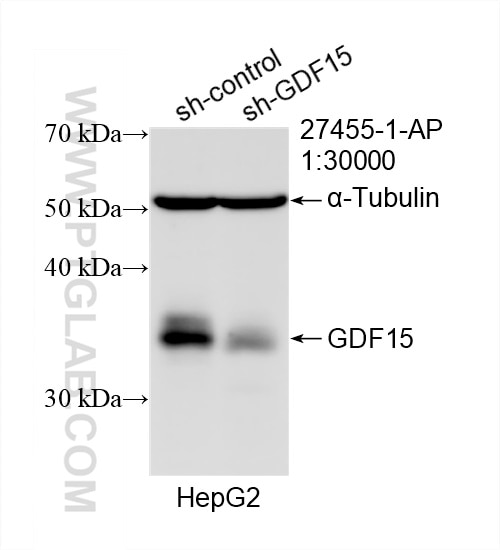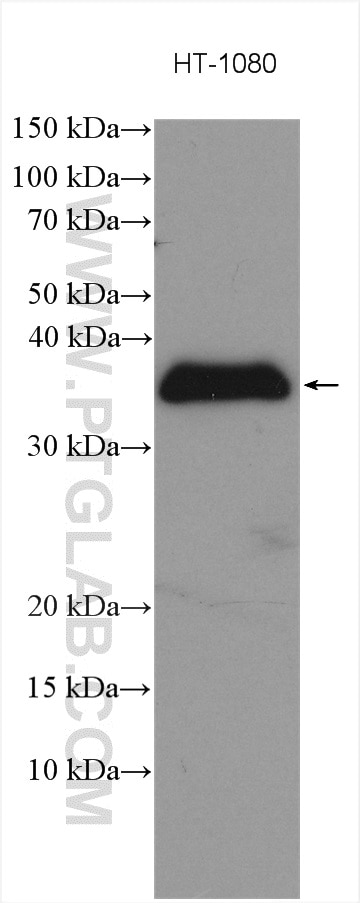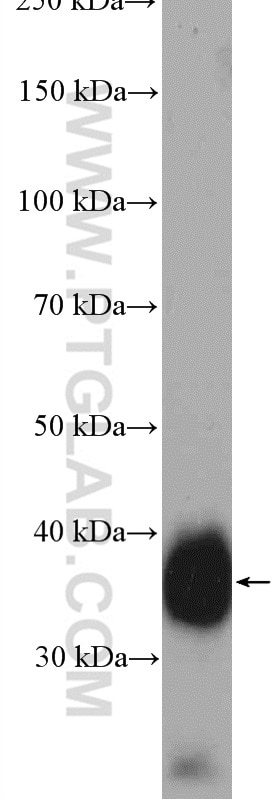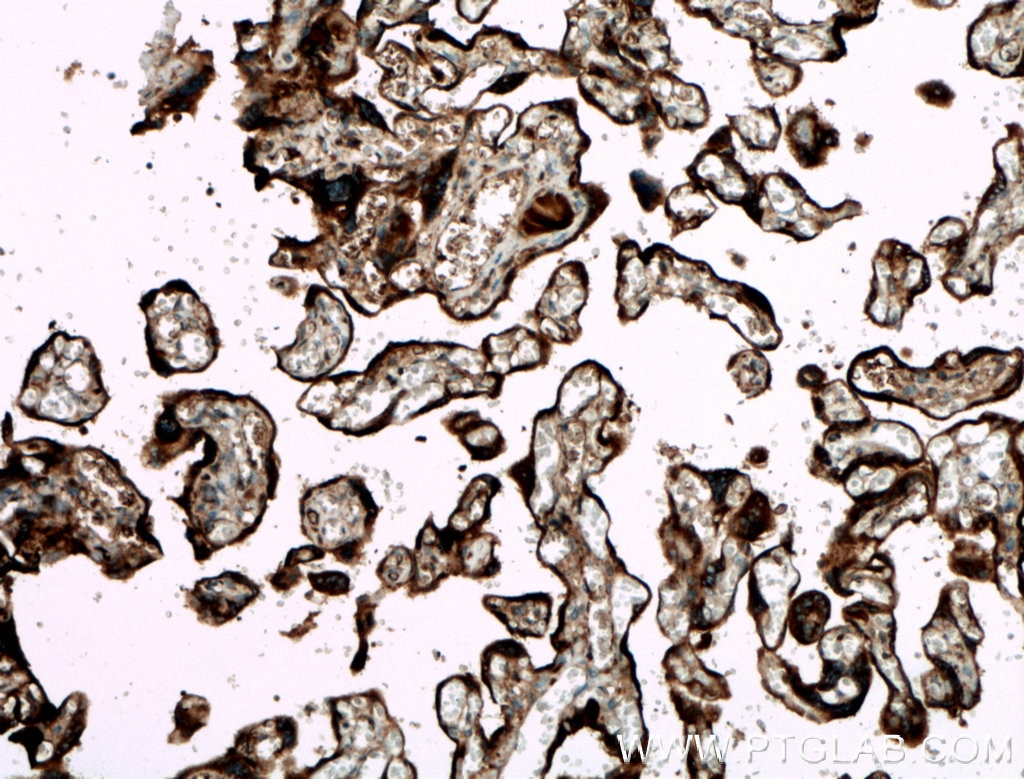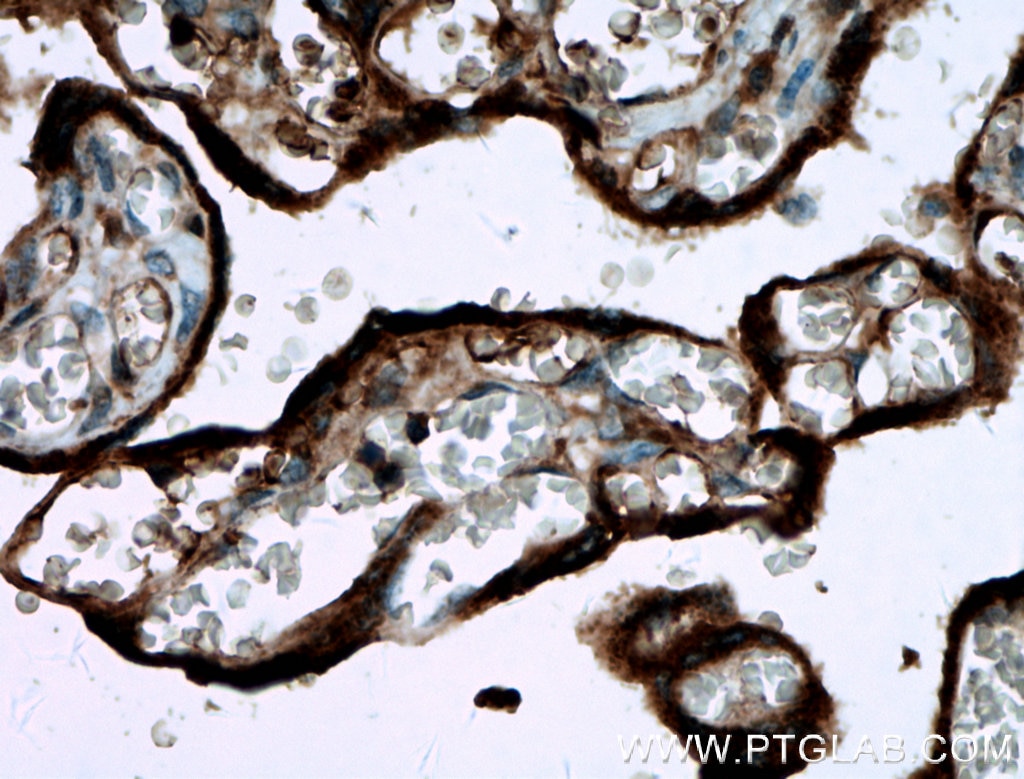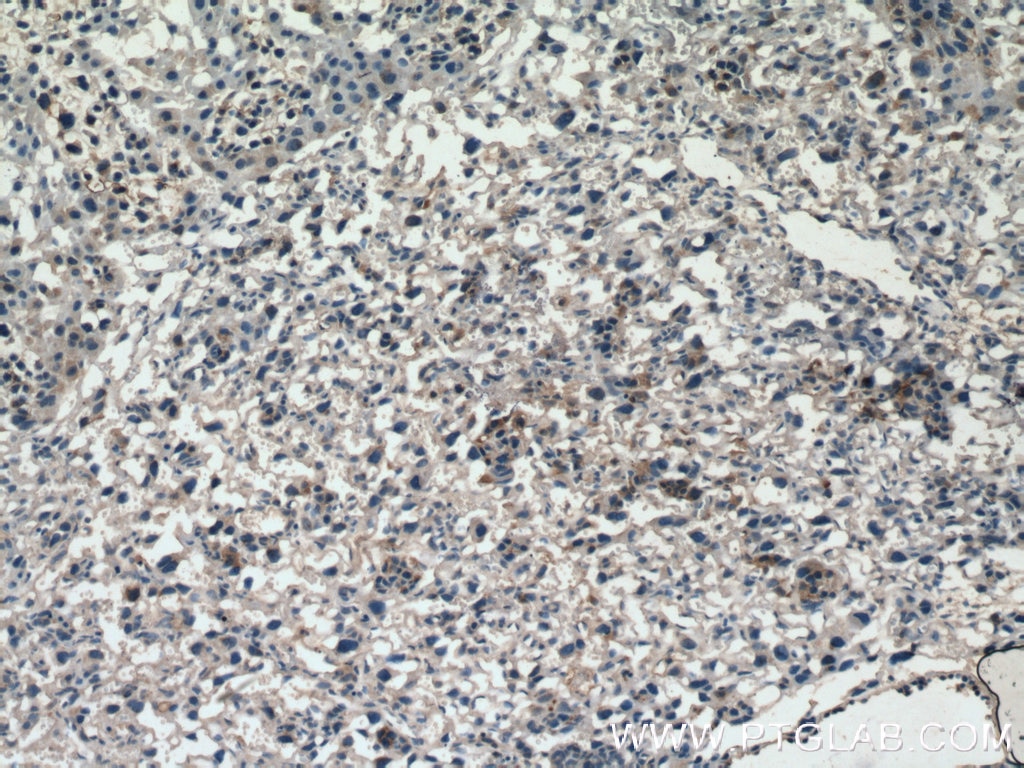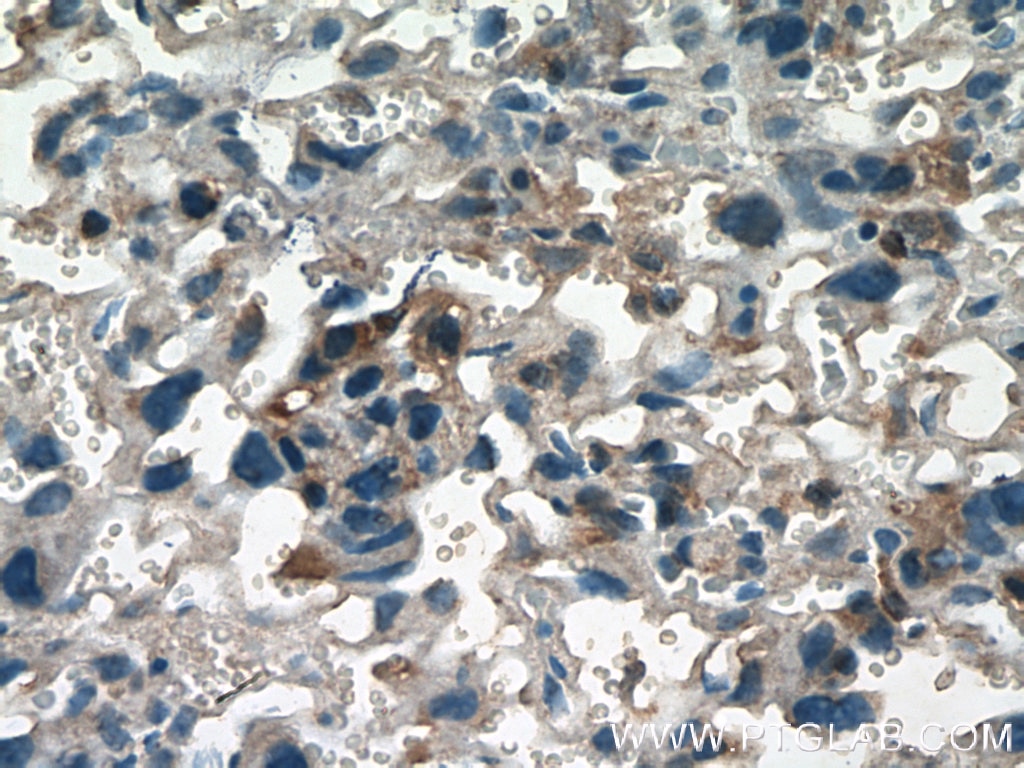- Featured Product
- KD/KO Validated
GDF15 Polyklonaler Antikörper
GDF15 Polyklonal Antikörper für IHC, WB, ELISA
Wirt / Isotyp
Kaninchen / IgG
Getestete Reaktivität
human, Maus und mehr (1)
Anwendung
WB, IHC, IF, ELISA
Konjugation
Unkonjugiert
Kat-Nr. : 27455-1-AP
Synonyme
Galerie der Validierungsdaten
Geprüfte Anwendungen
| Erfolgreiche Detektion in WB | HT-1080.Zellen, HepG2-Zellen, humanes Plazenta-Gewebe, LNCaP-Zellen |
| Erfolgreiche Detektion in IHC | humanes Plazenta-Gewebe, Maus-Plazenta-Gewebe Hinweis: Antigendemaskierung mit TE-Puffer pH 9,0 empfohlen. (*) Wahlweise kann die Antigendemaskierung auch mit Citratpuffer pH 6,0 erfolgen. |
Empfohlene Verdünnung
| Anwendung | Verdünnung |
|---|---|
| Western Blot (WB) | WB : 1:2000-1:10000 |
| Immunhistochemie (IHC) | IHC : 1:50-1:500 |
| It is recommended that this reagent should be titrated in each testing system to obtain optimal results. | |
| Sample-dependent, check data in validation data gallery | |
Veröffentlichte Anwendungen
| KD/KO | See 12 publications below |
| WB | See 22 publications below |
| IHC | See 4 publications below |
| IF | See 2 publications below |
Produktinformation
27455-1-AP bindet in WB, IHC, IF, ELISA GDF15 und zeigt Reaktivität mit human, Maus
| Getestete Reaktivität | human, Maus |
| In Publikationen genannte Reaktivität | human, Maus, Ratte |
| Wirt / Isotyp | Kaninchen / IgG |
| Klonalität | Polyklonal |
| Typ | Antikörper |
| Immunogen | GDF15 fusion protein Ag26760 |
| Vollständiger Name | growth differentiation factor 15 |
| Berechnetes Molekulargewicht | 34 kDa |
| Beobachtetes Molekulargewicht | 34 kDa |
| GenBank-Zugangsnummer | BC008962 |
| Gene symbol | GDF15 |
| Gene ID (NCBI) | 9518 |
| Konjugation | Unkonjugiert |
| Form | Liquid |
| Reinigungsmethode | Antigen-Affinitätsreinigung |
| Lagerungspuffer | PBS mit 0.02% Natriumazid und 50% Glycerin pH 7.3. |
| Lagerungsbedingungen | Bei -20°C lagern. Nach dem Versand ein Jahr lang stabil Aliquotieren ist bei -20oC Lagerung nicht notwendig. 20ul Größen enthalten 0,1% BSA. |
Hintergrundinformationen
Growth differentiation factor 15 (GDF15), also known as macrophage inhibitory cytokine-1 (MIC-1), is a protein of the transforming growth factor beta (TGFb) superfamily that regulates inflammatory and apoptotic pathways in injured tissues and during disease processes. GDF15 is a stress-induced cytokine and associated with hypoxia, inflammation and oxidative stress, it is also released from endothelial cells after stimulation with pro-inflammatory cytokines. GDF15 has been suggested as a target and biomarker for cardiovascular disease as it plays a cardioprotective role in the adult heart. GDF15 is highly expressed in the placenta. GDF15 is known to be involved in human embryo development and necessary for the maintenance of pregnancy. GDF15 is also produced by adipocytes in response to oxidative stress, a well-known factor associated with preeclampsia.
Protokolle
| Produktspezifische Protokolle | |
|---|---|
| WB protocol for GDF15 antibody 27455-1-AP | Protokoll herunterladen |
| IHC protocol for GDF15 antibody 27455-1-AP | Protokoll herunterladen |
| Standard-Protokolle | |
|---|---|
| Klicken Sie hier, um unsere Standardprotokolle anzuzeigen |
Publikationen
| Species | Application | Title |
|---|---|---|
Gastroenterology Hepatic Stellate Cells in Hepatocellular Carcinoma Promote Tumor Growth Via Growth Differentiation Factor 15 Production.
| ||
Nat Commun Dual functions of SPOP and ERG dictate androgen therapy responses in prostate cancer. | ||
Cancer Lett SULF2 enhances GDF15-SMAD axis to facilitate the initiation and progression of pancreatic cancer. | ||
Oxid Med Cell Longev Cyclic Polypeptide D7 Protects Bone Marrow Mesenchymal Cells and Promotes Chondrogenesis during Osteonecrosis of the Femoral Head via Growth Differentiation Factor 15-Mediated Redox Signaling. | ||
Cancers (Basel) GDF15 Is an Eribulin Response Biomarker also Required for Survival of DTP Breast Cancer Cells.
| ||
Antioxidants (Basel) Grape Seed Proanthocyanidins Induce Apoptosis and Cell Cycle Arrest of HepG2 Cells Accompanied by Induction of the MAPK Pathway and NAG-1. |
